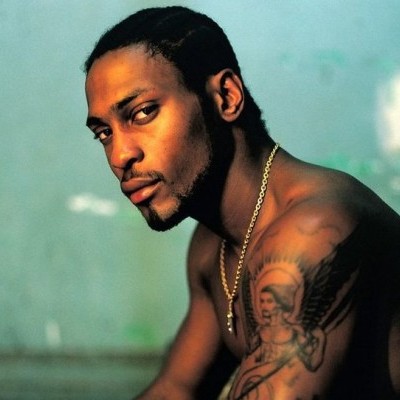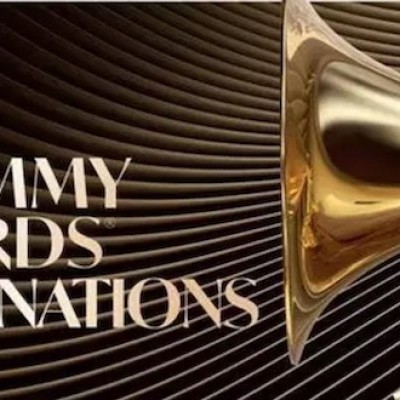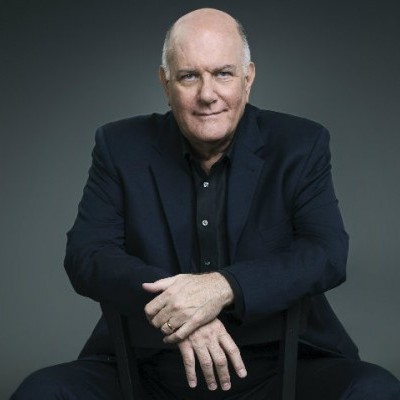Oct 28, 2025 10:47 AM
In Memoriam: Jack DeJohnette, 1942–2025
Jack DeJohnette, a bold and resourceful drummer and NEA Jazz Master who forged a unique vocabulary on the kit over his…

“Instead of trying to invent a single tone, we need to give it those shades of colors that change to fit the emotional interpretation of what the music is,” Branford Marsalis said, reflecting on the collective mindset of his longstanding quartet with Joey Calderazzo, Justin Faulkner and Eric Revis.
(Photo: Zach Smith)One afternoon in mid-September, a touring Branford Marsalis had some time to kill in Oberlin, Ohio. Rather than see the local sights, he picked up his soprano saxophone and stepped into the woodshed, joined by a classical favorite of his, Heitor Villa-Lobos’ “Fantasia For Saxophone.” The piece, brimming with notes at the upper and lower ends of the soprano-sax range, places great demands on a player’s lips to produce the sound he hears in his mind’s ear — and Marsalis was still feeling the workout’s effects at his Oberlin College concert that night. But that was the point: no pain, no gain.
“Playing pieces is always harder than playing solos,” he said, adding, in reference to the latter: “I don’t even consider that practicing.”
At age 65, the Soprano Saxophonist of the Year is still ready, if not eager, to endure a little soreness to maintain complete control of his sound. Known for its subtle shifts and emotional range, it is, like the fabled misbelief fruit of his native New Orleans, both plummy of texture and sweet of taste — but tempered with enough tang to let you know that he is in on the secret.
And that secret? “You’ve got to have sonic imagination.”
The public discourse, he asserted, has long served up the fiction that mouthpieces create tone. “They really don’t,” he said. “The mouthpiece is a conduit. You create the tone in your head. You have to listen to tunes and instead of listening for information, you listen for sound. And that makes a huge difference in how you approach music.”
Growing up in the Big Easy, where an unusually sizable cohort of players have always been able to earn a living solely on clarinet, the sound of that instrument was lodged in his ears from birth. Playing the clarinet for seven years as a youth, it became implanted in his brain.
When at high school graduation his grandfather gave him his first soprano saxophone, he made the switch from clarinet with relative ease — in the practice room, on the bandstand, in duets with brother Wynton, who, on trumpet, took the top part while Branford took the bottom. But the early grounding never left him.
“One of the first things I knew how to do on the soprano was make it sound like a clarinet,” he said.
Unlike legions of aspiring soprano players, he was drawn to influences other than John Coltrane. “I was never a fan of that sound,” he said. “I gravitated more toward Sidney Bechet’s sound and Wayne Shorter’s sound.”
Marsalis was in his teens when Shorter captured his attention, and in his 20s when he became immersed in the work of fellow New Orleanian Bechet. Hints of Bechet’s famous vibrato are present in Marsalis’ sound to this day.
But Marsalis’ soprano playing draws on a much wider array of influences. Those from the classical side — parallel to Marsalis’ jazz tour, he books a classical tour with a separate repertoire — are integral to it. Prominent among those influences, he said, are Paul Dombrecht and Bruce Haynes, specialists in the French oboe, a period instrument.
“You listen to those guys — such a warm, rich sound,” he said. “The French oboe sounds like a soprano saxophone, anyway. If you listen enough to this stuff, you absorb the sound. In a way, it becomes part of your sonic palette.”
The influences extend to vocalists: jazz chanteuses like Shirley Horn, to be sure, but also those in opera.
“When you listen enough you can hear there are some singers — the color of their voice changes when they’re supposed to be angry, sad, melancholy, whatever their emotion is,” Marsalis said. “I’m thinking, ‘We need to do that. Instead of trying to invent a single tone, we need to give it those shades of colors that change to fit the emotional interpretation of what the music is.’ That’s one of the things that I do and that we do.”
The “we” refers to his longstanding combo with pianist Joey Calderazzo, bassist Eric Revis and drummer Justin Faulkner. Collectively, the group has developed a sound as colorful, and reflective of the leader’s philosophy, as that of any working unit in jazz.
“He’s always had a personal take on soprano: a personal sound,” Calderazzo said of Marsalis. “He plays the right content with that sound.” Declaring that “it doesn’t sound right” when players who double on soprano don’t alter their content, he added: “When Branford doubles, it’s like turning a quartet into a quintet because it’s so different. It’s the sound first, then the content — but the content is informed, or inspired, by the sound.”
Over time, Calderazzo said, he has observed that instrument-specific approach take hold in his own soloing.
“It’s an interesting thing. If I’m playing keyboards and I have a lead sound, I improvise differently because of the sound. My melodic content is different on that than it’s going to be on the piano or Fender Rhodes.”
The primacy of sound in the Marsalis universe could hardly be clearer than on his quartet’s latest album, Belonging (Blue Note), which is the Album of the Year in the 90th annual Readers Poll. And in the realm of collective performance, few tunes in Marsalis’ recorded oeuvre more powerfully exemplify that primacy than the album’s title tune — a passionate but restrained expression of group connection told in one long, sweet swell that crests well before it has a chance to overwhelm the listener in saccharine emotion.
The tune — part of the Branford Marsalis Quartet’s full-cover take on the Keith Jarrett European Quartet’s 1974 album of the same name — made a deep impression on Marsalis when he first heard it. Over the years, he said, it proved key to the development of a rubato ballad approach that emphasizes the notes less than the means and methods of conveying them.
“I don’t have a vocabulary; I steal,” Marsalis said, allowing himself a knowing chuckle. “The thing that affects people who buy tickets is the delivery mechanism, not the information itself.” DB

Jack DeJohnette boasted a musical resume that was as long as it was fearsome.
Oct 28, 2025 10:47 AM
Jack DeJohnette, a bold and resourceful drummer and NEA Jazz Master who forged a unique vocabulary on the kit over his…

D’Angelo achieved commercial and critical success experimenting with a fusion of jazz, funk, soul, R&B and hip-hop.
Oct 14, 2025 1:47 PM
D’Angelo, a Grammy-winning R&B and neo-soul singer, guitarist and pianist who exerted a profound influence on 21st…

To see the complete list of nominations for the 2026 Grammy Awards, go to grammy.com.
Nov 11, 2025 12:35 PM
The nominations for the 2026 Grammy Awards are in, with plenty to smile about for the worlds of jazz, blues and beyond.…

Jim McNeely’s singular body of work had a profound and lasting influence on many of today’s top jazz composers in the U.S. and in Europe.
Oct 7, 2025 3:40 PM
Pianist Jim McNeely, one of the most distinguished large ensemble jazz composers of his generation, died Sept. 26 at…

Drummond was cherished by generations of mainstream jazz listeners and bandleaders for his authoritative tonal presence, a defining quality of his style most apparent when he played his instrument unamplified.
Nov 4, 2025 11:39 AM
Ray Drummond, a first-call bassist who appeared on hundreds of albums as a sideman for some of the top names in jazz…






